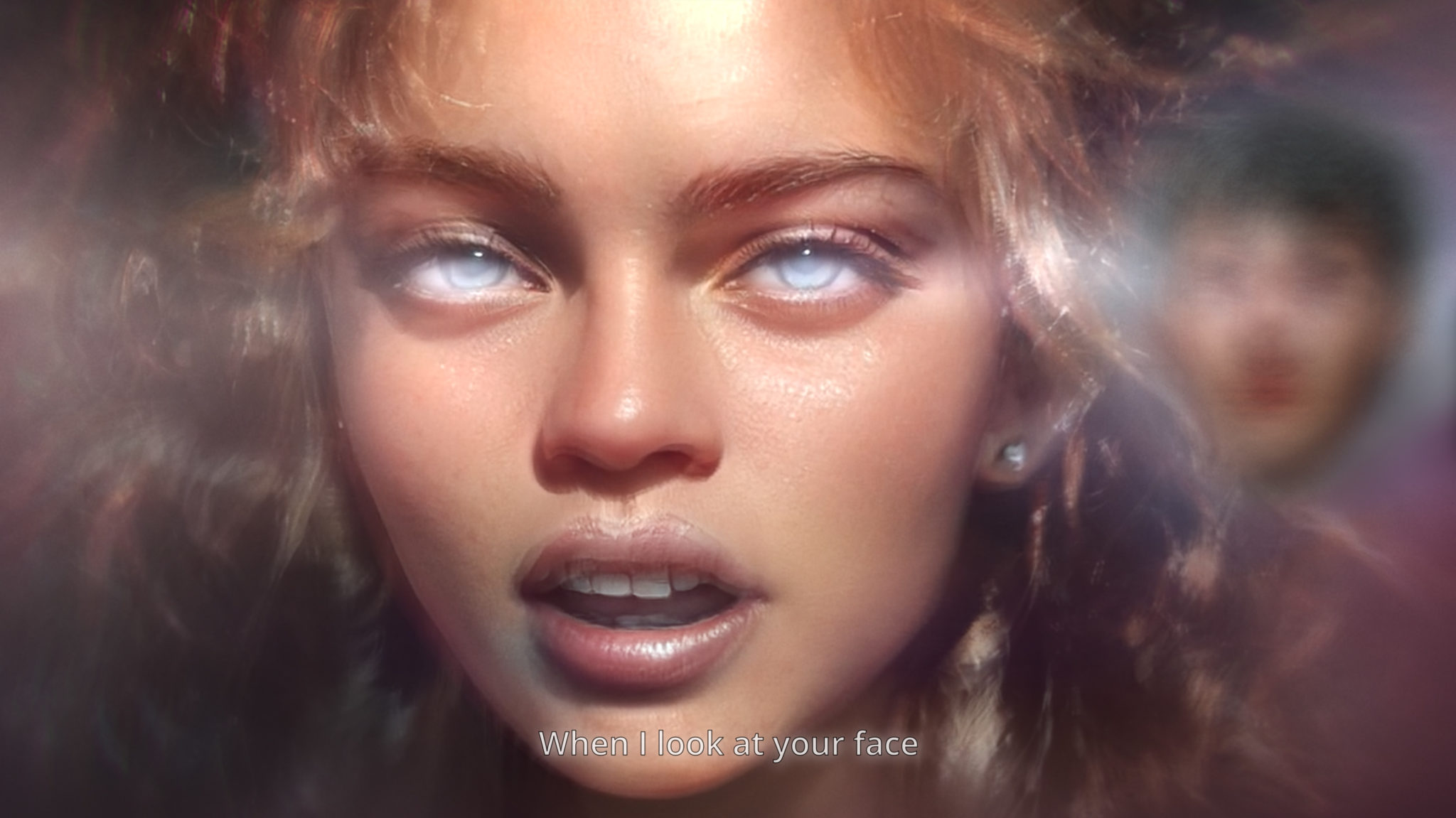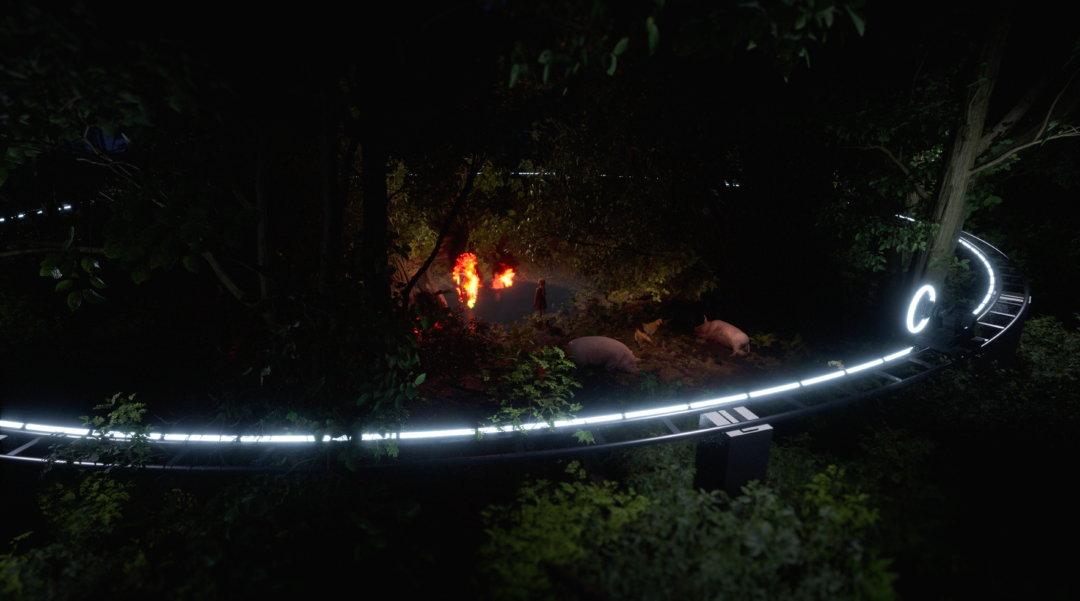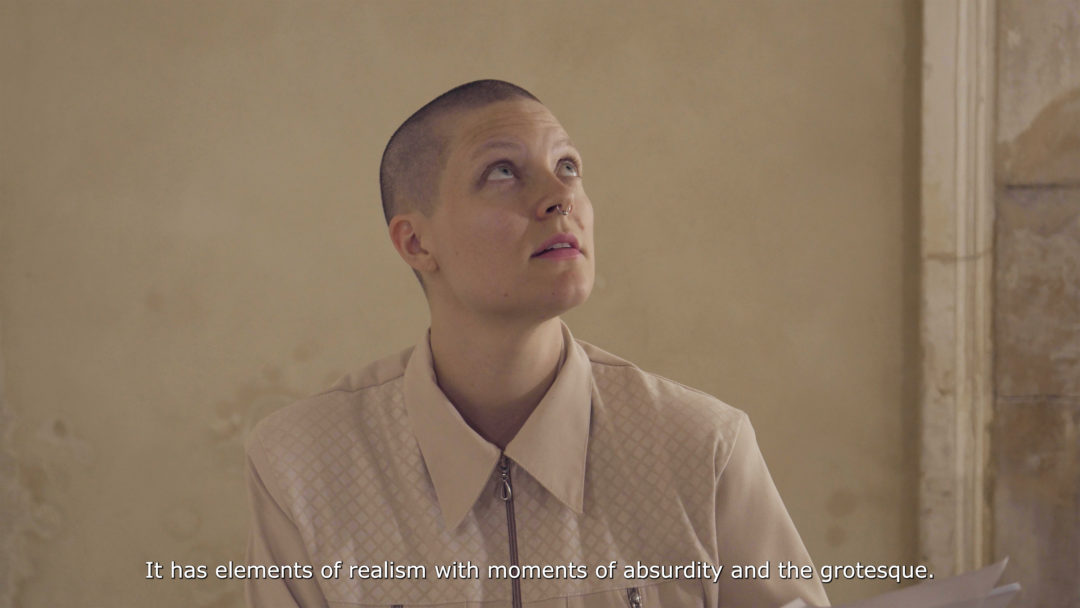Anna Longo

1. In the book you published last year, Le jeu de l’induction. Automatisation de la connaissance et réflexion philosophique (The Induction Game: Automatisation of Knowledge and Philosophical Thought), you define the induction game as a process which produces a certain regime of truth—one which you qualify as techno-scientific and would therefore reference classical scientific methods, data processing systems or any other method which organises data which will possibly be included in an overall system which responds to established laws of conversion, equivalence or relationships. You explain that this induction game—which until recently had been considered as being an instrument only humans make use of, although not exclusively—has in the last few decades become capable of processing a great number of data concerning our modes of existence and of consumption. In other words, the much talked-about rise of artificial intelligence (AI) which is the latest branch, nowadays. What can you tell us about the implications of all of this data concerning the singularity of our bodies and lives being absorbed into knowledge organisation systems—which were modelled by us, after all, and the way that we conceive our contemporary subjectivities, first off, and then second, with regard to our knowledge systems?
In Le jeu de l’induction. Automatisation de la connaissance et réflexion philosophique (Éditions Mimésis, 2022) (The Induction Game: Automatisation of Knowledge and Philosophical Thought), I retraced the steps of the transformation of inductive reasoning which led to the automation of the production of predictive hypothesesvia the statistical analysis of data. I offer an in-depth look at the revolution which was brought on by the introduction of the use of probability, and in particular Bayesian statistics. This transition is what made a strategic conception of the machine learning process possible, in other words it is what allowed it to evolve. Predictions are selected based on the effectiveness of the decisions they back up, according to pragmatic criteria, of course. Mathematical game theory is therefore established in order to model the probabilistic procedure of inductive reasoning: dependable predictive hypothesis—the conclusions which everyone must consider true or rational—are those which permit a maximum amount of utility. From this point of view, beliefs converge toward predictions which associate a set of information (traits which allow object recognition or identify a given state as a state of supply and demand) with a future situation which is either desirable or harmful. The probability assigned to these future circumstances is what allows an action to be taken which will reduce losses, and possibly achieve the highest gains. Through the observation of past decisions, we are able to learn how to choose the most dependable beliefs and strategies. In addition, it is by taking the risk of experimenting that we cause hypotheses to evolve, that we are able to make progress with these practices. This is where the model of the rational agent comes about, the strategic player of market competition.
Instead of being reassured by self-evident, universal and eternal metaphysical ideas, what is considered truth are the beliefs toward which agents are converging, they are adopted due to the practical advantages they represent. Beliefs are susceptible to evolve in an ordered way, bit by bit as new observations (or data sets) become available. The strategic importance of information within contemporary economy becomes apparent: the availability of new information is what allows the acceleration of the optimisation of strategies of interaction which any rational agent must conform to. Artificial intelligence is able to rapidly process quantities of information that biological brains are unable to due to their powerful ability to perform calculations. This is what allows them to automatically produce and test a large number of predictive hypotheses, pushing practices toward innovation. We can then no longer make choices without the complex computational systems which select the necessary information for us, in order to obtain our objectives. These tools become indispensable when it comes to remaining competitive. Access to the most sophisticated predictions, however—such as the most powerful technology—is not egalitarian. In fact, certain agents are able to position themselves at an advantage, giving themselves exclusive priority when it comes to the most efficient predictions. This is especially true when it comes to the biases applied to the preferences of those that are under-resourced. We are not all on equal footing when it comes to competitiveness in today’s information marketplace, considering that information has become an indispensable product for consumption as well as a resource whose extraction comes at a cost, and therefore has market value and can also be sold. The decisions of those who do not have access to the necessary means (whether through lack of competence, technology or capital) to access the most useful information, are oriented through the use of targeted suggestions which work to the advantage of the most well-informed. By consuming administered information which allows them to make decisions apt to permit the acquisition of goods they are in the position to aspire toward owning, users of digital services provide the data which developers of technological services and their fee-based clients process in order to obtain predictive hypothesis which will enable the highest gains.
Nonetheless, the question I ask in my book is the following: is it a valid claim to state that that which is being produced, consumed and reproduced by our society is actually knowledge, or is it simply information, in other words, merchandise whose value is relative to its circumstantial utility? In addition, what is the value of the knowledge produced by artworks, in a context where only information which offers competitive advantages counts?

2. Taking this into account, you counter the induction game with another way of constituting and ordering enunciations: the “ideal game”. This term, which you borrow from Gilles Deleuze, designates an operation which integrates and produces pure singularity. It is something which artists—in the broad sense of the term—and philosophers have in common. You note the following: “Behind the multiplication of possibilities which can be constructed algorithmically, we have lost the world of the senses, the capacity to appreciate the infinite magnificence which makes each individual a unique and ephemeral apparition, which cannot be constructed by an algorithm. This is what imbues the individual with a value in and of itself, far beyond any value which is relative to a particular end.” To take this unique apparition into account is what the ideal game appears to be able to offer, as opposed to that of induction. In The Logic of Sense Deleuze gives us the principal characteristics of this, the first of which is that there are “no pre-existing rules, each move invents its rules, which exist preceding the game,” “this set of moves affirms chance itself,” and finally, “a game like this, with no rules, winners or losers (…), where strategy and chance cannot be distinguished from one another, seems distant from reality.”

L’artiste a utilisé ChatGPT pour coécrire le scénario du film.
3. This set of rules is what allows you to claim that in the era of AI, the ideal game is the only one which remains essential to human thought, the inductive methods having been taken over by automated systems. You extend it to philosophy itself. What are your thoughts on the relationship between, from this perspective, artists and philosophers?
Deleuze’s “ideal game” has a very different objective from the strategic game of the information marketplace, and it also implies a totally different conception of knowledge, of the act of thinking. While the game in which all participate through the help of algorithms consists of optimising strategies through the production of predictions, the ideal game is a wager on the invention of an alternate form of collective organisation. This wager does not involve the prediction of the evolution of strategies which are put into place in a capitalistic society, but rather refers to the appearance of another form of organisation. Artworks invoke the event of another world, of a reality which cannot be reduced to a game which is considered the only reality which is rationally necessary. Being that this is something which cannot rationally be conceived as possible, the event which the philosopher or artist wagers on is accessible by means of a different thought process than the inductive reasoning we use to orient ourselves in the reality we find ourselves currently immersed in. This thought process raises us up to reach virtual conditions of the actualisation of the plurality of possible worlds; worlds which do not exist as of yet, and will perhaps never exist at all, but can nonetheless exist in the form of concrete objects, in other words, artworks. These worlds are not represented or imagined by the artists, rather, they are signs which force us to feel and to think differently, in accordance with a reality of a different nature. These signs engender sensations within us which do not correspond to anything we can experience in the ordinary world. In contrast, they force us to feel things we would not otherwise have the occasion to feel over the course of the orderly interactions in the context of the game where everything is reduced to a set of pertinent information, where only what is useful is taken into account in order to respond effectively.
Art and philosophy have a similar way of functioning; they both broaden our horizons, cause us to feel and to think about what would otherwise remain unknown. In a way, to know does not mean to have learned to respond automatically to information selected on the basis of its pertinence, as required by rationality. From the speculative point of view of the ideal game, to know means experimenting with feelings and exploring concepts which give us a wider access to what we are able to feel and think. The object of this knowing is the opening up of the possible beyond the possibilities which are included in the innovating evolution of the game we have become accustomed to consider as the only reality we are able to experience. This type of knowledge is therefore irreducible to information, because its value is relative to the attainment of objectives fixed by the rational game of the market. The knowledge produced by artworks has a type of eternal value which calls on us to open ourselves up to the possibility of other games, to embrace the radical difference of feelings and concepts which do not belong to us.
At the end of the book, you go into detail about the stakes concerning the truth of the singular to resist its own simulation: “This (phenomenal) reality is the flux of becoming where every form of knowledge is merely a temporary appearance like any other, the world of the senses and of appearances which cannot be known without the presence of a lie. This is the reality in accordance with which the artist lives, in an effort to produce fictions which are conscious of their own fictionality and which, by celebrating the incessant wealth that comes from the transitory qualities of each each instant, create appearances of appearances which contribute to the wealth of the senses.” If the flavour of art comes from the fact that the truth in fiction knows it is fiction, then why are artists necessary? Why, if an image or a fiction produced by a programme manages to affect us, are we nonetheless left with the impression of having been cheated?
The excerpt you quoted refers to Nietzsche’s concept of the simulacra, which inspired Deleuze’s notion of the ideal game, as well as his aesthetic. Simulacra are fictions which cannot be broken down to representations, because their purpose is to communicate pertinent information about an object—the necessary information to establish effective strategies for interaction. A fiction does not communicate any useful information with regard to rational or efficient decision making. On the other hand, as I mentioned earlier, an artwork gives us access to feelings through the encounter with an object which belongs to another world. This fiction is therefore one which reveals the fictionality of the belief in this process which is considered the only possible reality. In a way, artworks allow us to see any reality as a construction which could be entirely different; the world in which we exist can therefore be seen as a fiction as well, like an object whose value lies in the affect and sensibility it gives access to. A large quantity of incessant information is, from this point of view, a form of poverty, when compared with the wealth of stimulation for our senses which must be put aside in order to concentrate exclusively on what is useful in order to perform the rationally adequate response.
4.You participate in a number of programs which take into account questions raised by the development of AI and the aesthetic and political implications of this. I am referring to the program you will be leading at the Collège international de philosophie (CIPh) this year, or the artistic projects you participate in; for instance, in the work of Anne-Sarah Huet or more recently, with Féral, a new season of which has been introduced last month by the artists Fabien Giraud, Raphaël Siboni and curator Anne Stenne. Your more informal exchanges with many artists who manipulate digital representations of human forms come to mind, as well, such as Grégory Chatonski or the duo formed by Émilie Brout and Maxime Marion. I would argue that your written and philosophical works also have a lot in common, your projects often seem linked to those of artists who explore the same themes: is there a link in your opinion?
One thing I am certain about is that we never think or create individually. We do these things alone, of course, in front of a computer or in an atelier, but the things we produce in this way would not have any value if it were not for the fact that these are all attempts to respond to a collective problem. The artists you mentioned all ask the same questions, they are trying to understand the present, they are calling upon the future. Through their works and their way of thinking, these artists urge me to go beyond the framework of what I take as established. This is the issue we keep coming back to, together, the immediacy of the present is what imposes this on us. This is why I decided to base my next CIPh seminar on the crucial question of the relationship between creativity and ecology. The goal is to work together to come up with modes of creation which will operate within a field which surpasses notions of growth and innovation. Indeed, climate emergency calls on artists and philosophers to take action, to increase the number of alert messages emitted by fiction, form and thoughtform scientists, in order to actively participate in an overall change in practices and lifestyles. This new field will be the natural progression of my research into inductive thinking. If digitalisation and automation seem to be forcing culture into submitting itself to the wiles of the information marketplace, making ecologically sound practices conform to a program which sustains the logic of neoliberal organisation, then we will need to define, if possible, the current technologies, and, if not, define ways in which these technologies can be put to work in favour of life, instead of toward its exploitation.

L’artiste a utilisé ChatGPT pour coécrire le scénario du film.
1 L’inférence bayésienne (utilisant le théorème de Bayes) est une méthode statistique par laquelle on calcule les probabilités de diverses causes hypothétiques à partir de l’observation d’événements connus.
2 Gilles Deleuze, Logique du sens, Paris, Les Éditions de minuit, 1969.
3 Ibid, p. 75-76
______________________________________________________________________________
Head image : Émilie Brout & Maxime Marion, IDLE (acts α and ß), 2023. Vidéo 4K, 25′. Avec le soutien du Cnap & Fonds culturel national Luxembourg. Courtesy les artistes et galerie 22,48m2.
- From the issue: 104
- Share: ,
- By the same author: Patrice Maniglier, Catherine Malabou, Nicolas Bourriaud, Géraldine Gourbe,
Related articles
Céline Poulin
by Andréanne Béguin
Émilie Brout & Maxime Marion
by Ingrid Luquet-Gad
Interview with Warren Neidich
by Yves Citton

